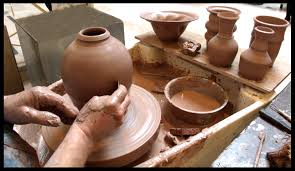Building a pottery kiln is an exciting project for any pottery enthusiast. A kiln is a furnace used to heat materials to high temperatures to transform them into a more durable substance. In the pottery world, kilns are used to fire clay objects, transforming them from a soft, pliable material into a hard, durable ceramic piece. Building your own pottery kiln is not only a great way to save money, but it is also a way to customize the kiln to meet your specific needs. In this article, we will discuss the steps involved in building a pottery kiln.
1. Determine the Type of Kiln You Want to Build
The first step in building a pottery kiln is deciding what type of kiln you want to build. There are several types of kilns, including electric, gas, and wood-fired kilns. Each type of kiln has its own advantages and disadvantages. Electric kilns are the easiest to use and require the least amount of maintenance, but they can be expensive to operate. Gas kilns are more expensive to build, but they are more efficient and can reach higher temperatures than electric kilns. Wood-fired kilns are the most traditional type of kiln and are favored by many potters for their unique firing results. However, they require a lot of time and effort to build and operate.
2. Gather Materials
Once you have decided on the type of kiln you want to build, the next step is to gather the materials you will need. The materials you will need depend on the type of kiln you are building, but some common materials include bricks, refractory cement, burners, insulation, and thermocouples.
3. Build the Kiln Base
The first step in building your kiln is to build the base. The base should be made of fireproof materials, such as bricks or blocks, and should be sturdy enough to support the weight of the kiln. The size of the base will depend on the size of the kiln you are building.
4. Build the Kiln Walls
The next step is to build the walls of the kiln. The walls should be made of fireproof materials, such as bricks or blocks, and should be at least 3 inches thick. The walls should be built up to a height of at least 3 feet and should be tapered slightly towards the top to help distribute heat evenly.
5. Install the Insulation
After the walls are built, the next step is to install the insulation. The insulation should be placed between the walls and the kiln chamber to help retain heat. The most commonly used insulation material is ceramic fiber, which is easy to install and provides excellent insulation.
6. Install the Burners
If you are building a gas kiln, the next step is to install the burners. The burners should be placed in the base of the kiln and should be spaced evenly around the perimeter. The number of burners you will need depends on the size of the kiln you are building.
7. Install the Thermocouples
The thermocouples are used to monitor the temperature inside the kiln. They should be installed in the walls of the kiln at various heights to ensure accurate temperature readings. The number of thermocouples you will need depends on the size of the kiln you are building.
8. Install the Kiln Shelves
The final step in building your kiln is to install the kiln shelves. The shelves are used to hold the pottery pieces during firing. The shelves should be made of fireproof materials, such as kiln shelves or refractory bricks.
9. Firing the Kiln
Once the kiln is built, you are ready to fire it up! Firing a kiln can be a complex process, and it is important to follow the manufacturer’s instructions carefully. The firing process involves several stages, including preheating, bisque firing, and glaze firing. Each stage requires specific temperatures and firing times, and it is important to monitor the temperature carefully throughout the firing process.
10. Maintenance
After firing, it is important to maintain your kiln to ensure its longevity. Regular maintenance includes cleaning the kiln shelves, replacing damaged bricks, and checking the burners and thermocouples for wear and tear.
Building a pottery kiln is a rewarding project that allows you to customize your kiln to meet your specific needs. It requires careful planning, attention to detail, and a lot of hard work, but the end result is a kiln that you can use for years to come. Whether you choose to build an electric, gas, or wood-fired kiln, the process is similar, and the end result is a beautiful and functional piece of pottery equipment.

 Mexican pottery sometimes takes on the shape of whatever the artist happens to fancy at the moment, depending of course on how seriously the artist takes him or herself. If you are in the mood to collect some of the mythical creatures of Mexican folklore, chances are that you can find a potter that will incorporate these beasts into his or her work (for the right price of course). There have been some quite famous pieces that have been completely whimsical in nature and serve as a great reminder that we really should avoiding taking our lives and ourselves so seriously all the time.
Mexican pottery sometimes takes on the shape of whatever the artist happens to fancy at the moment, depending of course on how seriously the artist takes him or herself. If you are in the mood to collect some of the mythical creatures of Mexican folklore, chances are that you can find a potter that will incorporate these beasts into his or her work (for the right price of course). There have been some quite famous pieces that have been completely whimsical in nature and serve as a great reminder that we really should avoiding taking our lives and ourselves so seriously all the time.